After our chicken wire frame craft last week with Arrow Fastener, a bunch of people asked me for more details on raising chickens. This is our first season raising chickens, and it's actually gone quite smoothly. I have a little practice from helping my neighbors with theirs when I was a kid, but I am no expert by any means.
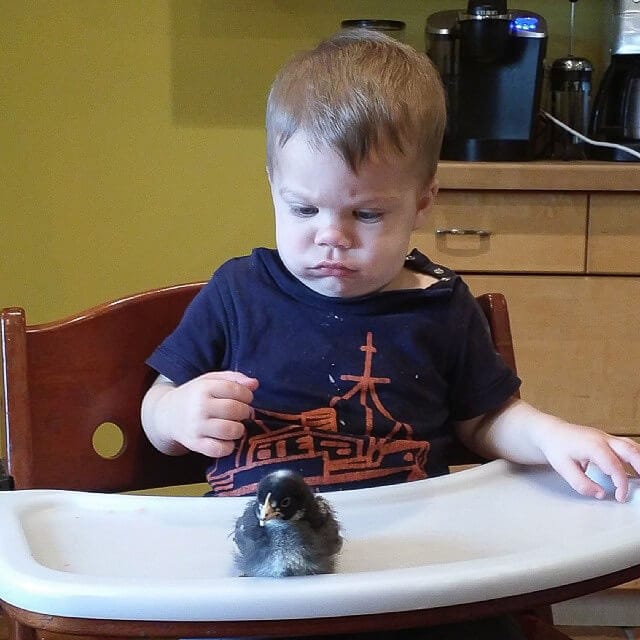
A lot of things about raising chickens caught me completely off-guard, but I've also found that the details haven't been as overwhelming as I expected. Here's a look at our experience, in hopes of helping other people who are considering raising chickens at home.
A First-Hand Account of Raising Chickens
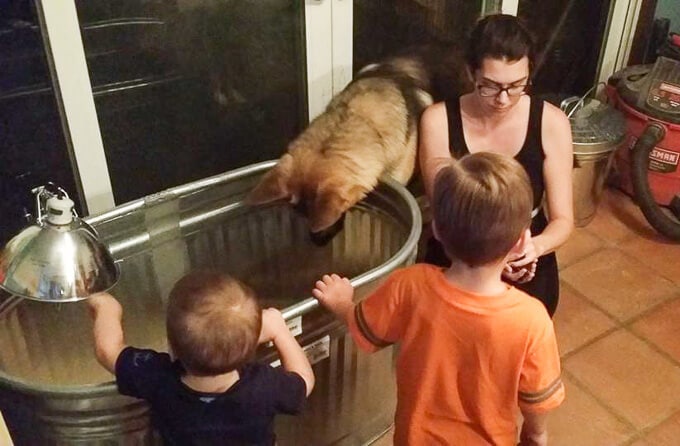
Most people start with young chicks and keep them indoors in a brooder for about six weeks before moving them outside, after their adult feathers are fully-formed. The brooder is a simple basin or box that contains a small feeder, waterer and a heating lamp that is used for varying lengths of the day (less and less as the chicks get older). I'd recommend Rhode Island Reds – they are known as the best, most versatile breed and they're the ones who have given us the least trouble in terms of temperament and illnesses.
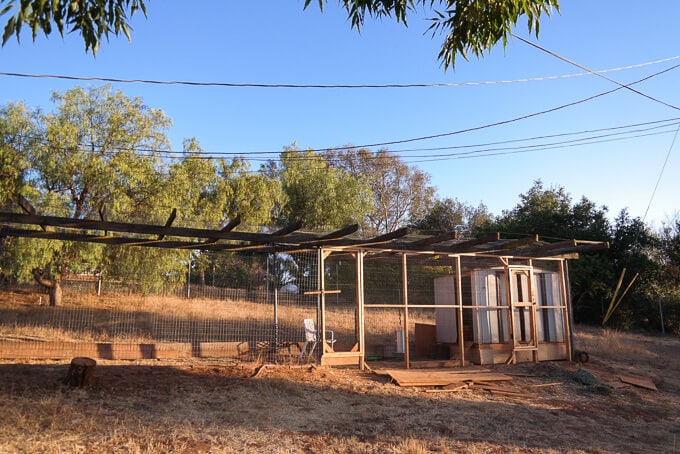
Then comes the chicken coop and run, the part that often sneaks up and stymies people who are interested in raising chickens. Fear not! Chicken coop designs are as varied as the many people who construct them. All you need are some wood beams running upward, wood beams running across to serve as a roof support, a bunch of chicken wire to enclose it and some nails and heavy-duty staples to secure it all (this is where our partnership with Arrow Fastener came in very, very handy). The only really tricky part is the door. You have to be able to get in there somehow. There was a broken-down chicken run and coop on our property when we bought it, so we reinforced and re-enclosed it.
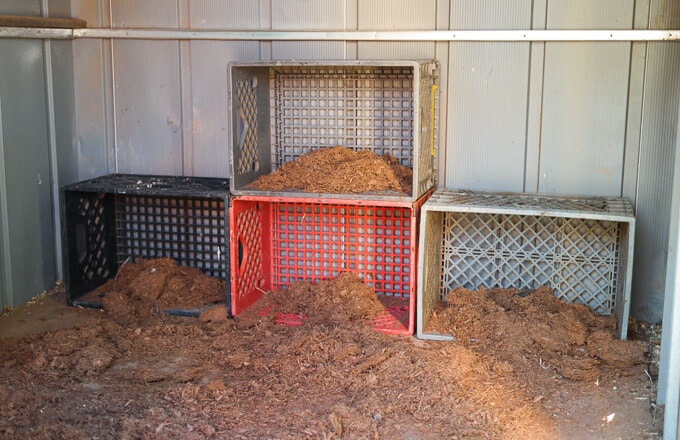
As far as the coop, chickens simply need a private space with four walls and boxes where they can lay their eggs. You can score a small shed on Craigslist, or put together a few plywood pieces. We use Coconut Cowboy bedding (there should be way more in here – we ran out right before I snapped a shot, of course!). Coconut husks are more expensive but far more absorbent than traditional hay/straw bedding so you can go longer between coop cleanings, and it can be composted.
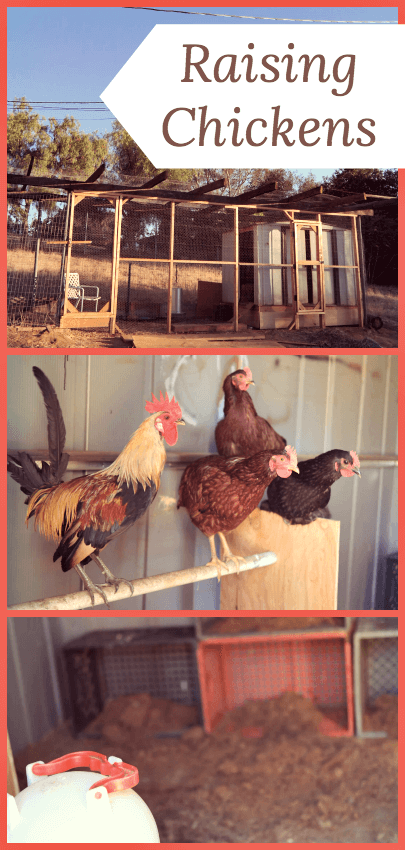
Chickens like having a roost to perch on, which can be easily make-shifted with an old closet rod. Large waterers and feeders can be bought at any feed supply store or online, along with chicken feed.
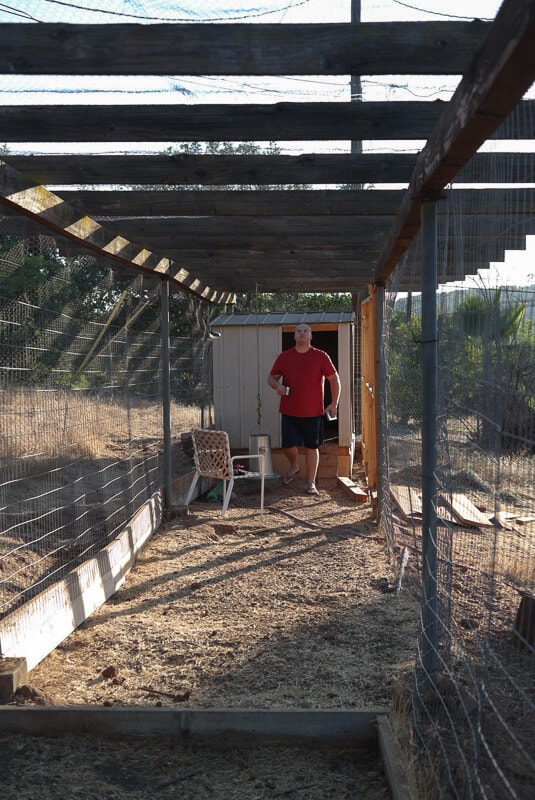
Make sure to tie your chicken feeder up by a rope, or they'll kick dirt into it. Here you can see the end of our long chicken run (Nate is busy fixing holes with his staple guns).
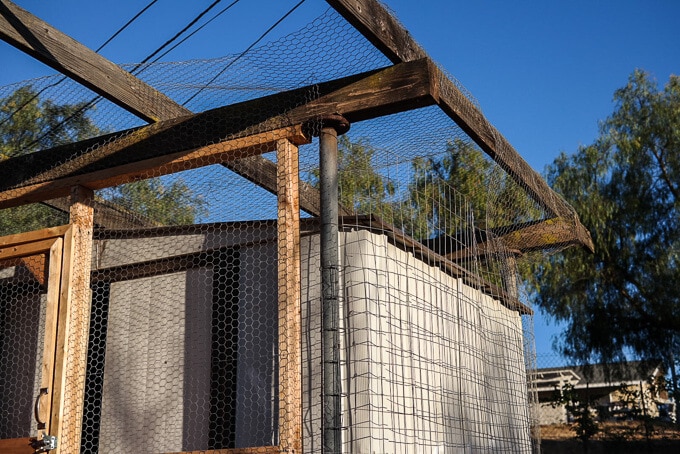
If I could stress one single thing about raising chickens and building an efficient coop and run, it would be to carefully go over the entire thing and leave no open holes or spaces between the chicken wire and beams. Get a staple gun and a hammer tacker and go to town until EVERY SINGLE square inch is sealed from roof to floor. Otherwise, predators will sneak in or your feathered friends will sneak out. Yes, we learned that lesson the hard way.